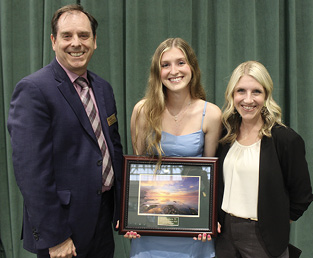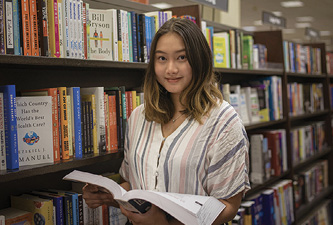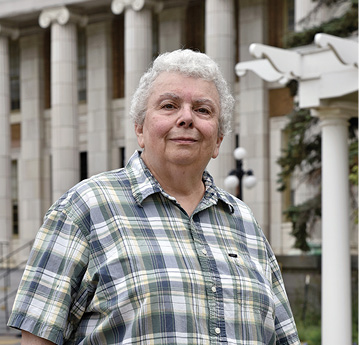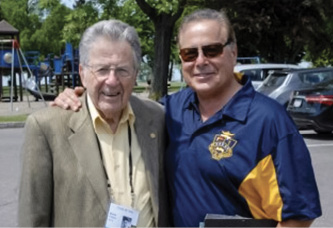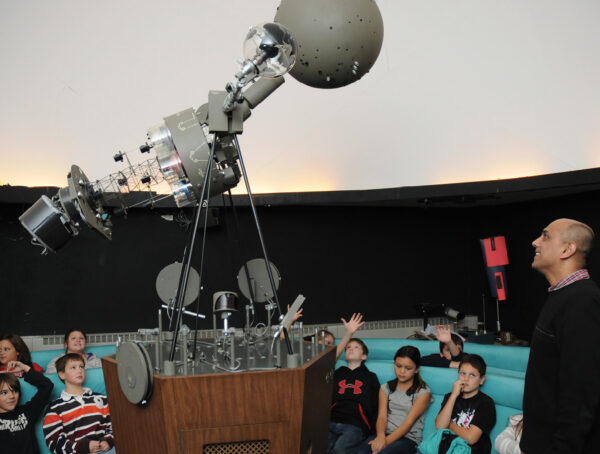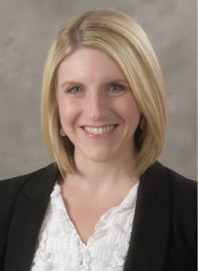 Emily Oaks, Ph.D., plunges a well-used shovel into sandy dirt behind her Sterling farmhouse to lift a Monarda Didyma from the earth. She cradles its tangled roots in her hands and slides them, dirt and all, into a bag to be given to a friend. The friend will replant, relish the beauty of the fringed red flower and use the tender, aromatic leaves to brew pungent Oswego tea, another name for the native plant.
Emily Oaks, Ph.D., plunges a well-used shovel into sandy dirt behind her Sterling farmhouse to lift a Monarda Didyma from the earth. She cradles its tangled roots in her hands and slides them, dirt and all, into a bag to be given to a friend. The friend will replant, relish the beauty of the fringed red flower and use the tender, aromatic leaves to brew pungent Oswego tea, another name for the native plant.
Retired after 21 years in the biology department, Dr. Oaks is on a mission to restore her property to its natural state. In the high summer days of August, the meadows emit a spiced floral scent and brandish an array of colors and textures. While the effect is that of a free growing wildflower garden, the fields represent years of deliberate restoration, replacing imports with indigenous plants.
“Not only do I want my little piece of the planet to reflect New York and not Europe,” Oaks says, “but I also know that everything in the environment functions better when we work with native species.” That philosophy explains her willingness to spend hours of back-numbing labor pulling invasive plants such as bishop’s weed. “It’s a useless plant,” she says. “Nothing lives on it.”
Oaks knows every living thing on her property by name and location — even three resident garden spiders. She knows the native violets and ferns that grew up spontaneously after she cleared non-native trees from a woodlot, and she knows the trillium purchased from a nursery and the yellow Coraopolis that grew from seeds given to her by Harry Shock, emeritus assistant dean of students.
Beyond the garden, in a fading red barn, Oaks is restoring a Model A Ford, employing skills she learned in an engine tune up course in 1978. She also enjoys traveling and, in the autumn, completed a camping excursion to the mid-west.
“In my family, there was never anything I was told I couldn’t do,” says the only female in a flock of five. She grew up near woodlands north of Pittsburg, the oldest child of a research chemist father and a biologist mother.
Valedictorian of her high school class, Oaks attended Rice University in Houston. “I intended to study math, something different from my parents.” But a junior-year biology course inspired her to add the major, and she went on to graduate studies at Yale under renowned ecologist G. Evelyn Hutchinson.
After beginning her career in northern Utah, Oaks joined the biology faculty at Oswego in 1984. She served as department chair from 1998 to 2005, and she continues to teach one course a year. Oaks says she loves comparative anatomy. “If you don’t appreciate the function, anatomy doesn’t make any sense.”
Commensurate with her love of discipline, is the value Oaks places on interaction with students, those who grasp the material with ease and those who require encouragement and extra time. Among her teaching strategies, Oaks explains evolution with the prompt “From Fish to Philosopher.”
Two recent teaching assistants used that slogan when they gave Oaks a custom-printed mug with illustrations that proceed from fish to amphibian and through the ascending vertebrates to humankind. It was their way to say thanks for an unforgettable experience and an unforgettable mnemonic from an unforgettable professor.
—Linda Loomis ’90 M ’97
You might also like
More from Class Notes
Class Notes – Winter 2024
Class Notes - Winter 2024 Editor’s Note: Due to changes to our typical production schedule, this Class Notes reflects submissions from July …
From the Archives – Winter 2024
From the Archives - Winter 2024 SAVE THE DATE: April 8, 2024 Oswego will experience a very rare total eclipse of the …
Oswego Matters – Winter 2024
Oswego Matters - Winter 2024 As a mother of two young children, I’ve grown accustomed to frequent transitions; to new beginnings; …







